Student Blog
Jessica
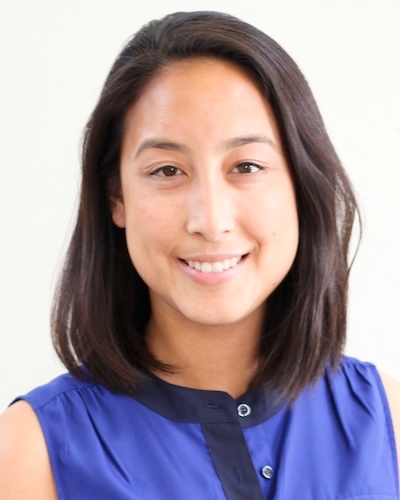
Cohort Love ⟩
December 6, 2016, by Jessica
Admissions Community School/Life Balance
Prospective students are often nervous about the fact that USC’s program is relatively larger than other OT programs. Each class has about 120-130 students, so students might be worried about getting “lost in the shuffle.” However the great thing about the program is that students are divided into three cohorts, with about 40-45 students in each one. Your cohort is the group of people you’ll be taking most of your classes with, so class sizes remain more intimate. For lab sections, your cohort is divided in half, so there will only be 20-25 students in each lab, so you can get more hands on experience.
You’ll become pretty close with your cohort, since you take most of your classes with one another. Some cohorts will plan outings together and share resources with one another. Some of the fun things we’ve done as a cohort: go out to dinner, happy hour, hiking, attend a Dodgers game, and celebrate the holidays with a white elephant party!
This past week was our last class together as a cohort. For our last semester, we will all be taking elective courses of our choosing, so everyone will be split up into different classes. In rememberance of my awesome cohort, here are some photos of Cohort A!
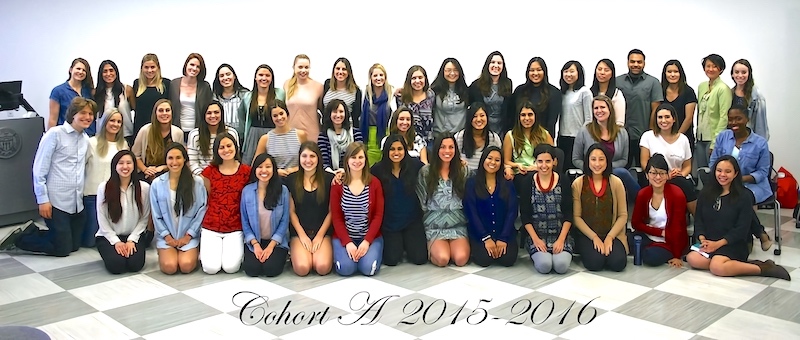
Our first year together
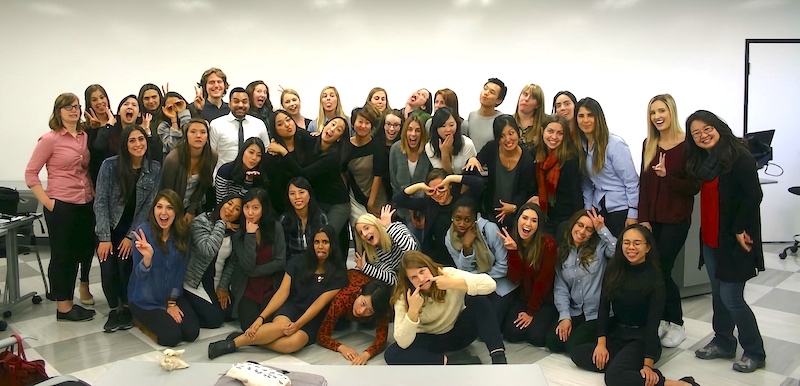
Our last class together
⋯

Goodbye Level I Fieldwork! ⟩
November 28, 2016, by Jessica
Two weeks ago was my last day of fieldwork, and it was definitely bittersweet. I truly enjoyed my experience this past semester at College View School, a specialized school for children with severe disabilities within Glendale Unified School District. Even though I was a special education teacher before coming to OT school, I had never worked with children with severe physical and cognitive disabilities, so this was an amazing learning experience for me. My clinical instructor was very knowledgeable and very supportive, which helped me grow in my own clinical reasoning skills and interpersonal skills. What impressed me most about this site is how well-resourced this school was — they had a beautiful facility with spacious classrooms, accessible playground equipment, a wheelchair accessible indoor heated pool, and a therapy gym. It was great to see that this school district really invested in making this school great for their kids with the highest needs, which is something that is not always prioritized in other school districts.
I was also impressed by how the school really wanted to give the kids the same experiences that other kids in general education campuses get. They had “student of the month” assemblies, where kids from each classroom would get recognized for their growth and progress in front of the whole school and their families. You could see the pride in their parents’ faces, beaming smiles and endlessly snapping photos of their child on stage. They also had themed dress up days, i.e. ’80s day, Hawaiian day, where the kids and teachers would get decked out and compete to win a trophy and bragging rights. Those are just a few of the awesome things that happened at College View in my short time there, and I’m grateful to have had the opportunity to meet and work with all of the wonderful children and staff.

College View School, Glendale, CA
⋯

Cardboard Creativity ⟩
November 14, 2016, by Jessica
Hello again!
As you may have noticed from my past few posts about the pediatrics course, it is very hand-on and interactive. Each week our professors try to make the content come to life for us, so it really makes the material stick. This past week, we focused on learning about adaptive seating and mobility devices (i.e., walkers, wheelchairs, scooters, etc.) especially built for children with disabilities. As you may have predicted, customized adaptive seating and mobility devices are REALLY expensive, and children often quickly grow out of their devices. What’s amazing is that there are organizations out there that specialize in building adaptive devices out of cardboard, since it is both cost-effective and customizable. I know what you’re thinking — cardboard, really? It sounds like it would be flimsy, but these professionals have found ways to reinforce the cardboard so it is sturdy and durable. Check out Adaptive Design Association, if you’re interested in learning more about this! They have some cool videos in their learning library for each step they take to make customized equipment with cardboard.
In the spirit of creativity (and competition), our professor asked us to choose any piece of equipment in the classroom and adapt it for a child with disabilities — using cardboard. After building it, we had to “sell it” by presenting an infomercial. These infomercials were hilarious, to say the least. Here’s a photo of my team’s adaptive design — we decided to adapt a scooter board by adding a cardboard back and strap in front for trunk support. Since this is for a child, we decided to add some fun decorations to make it look like a submarine, aka the “USS Chan.”

Yours for a low, low price of $19.99. Some assembly is required.
⋯

Feed Me! ⟩
November 7, 2016, by Jessica
This past week in pediatrics, we discussed OT’s role in feeding intervention. I knew OTs were involved in feeding, however I didn’t realize how common it is for OTs to address feeding in all types of pediatric settings — hospital, clinics, schools, etc. This can truly be a specialty area of practice, and you can get Advanced Practice in swallowing and feeding in the state of CA. In fact, one of our elective courses, OT 575 Dysphagia Across the Lifespan, counts for 24 of the 45 recommended hours of continuing education to obtain this advanced practice certification!
In lab, we were asked to practice feeding one another these kid-friendly foods, and analyze the different motor movements we were using while eating these foods of various textures. Also, it was a good opportunity to try baby food for the first time. Figured it might be a good idea to try something I would be feeding to someone else. What I learned: baby food takes like cold soup.
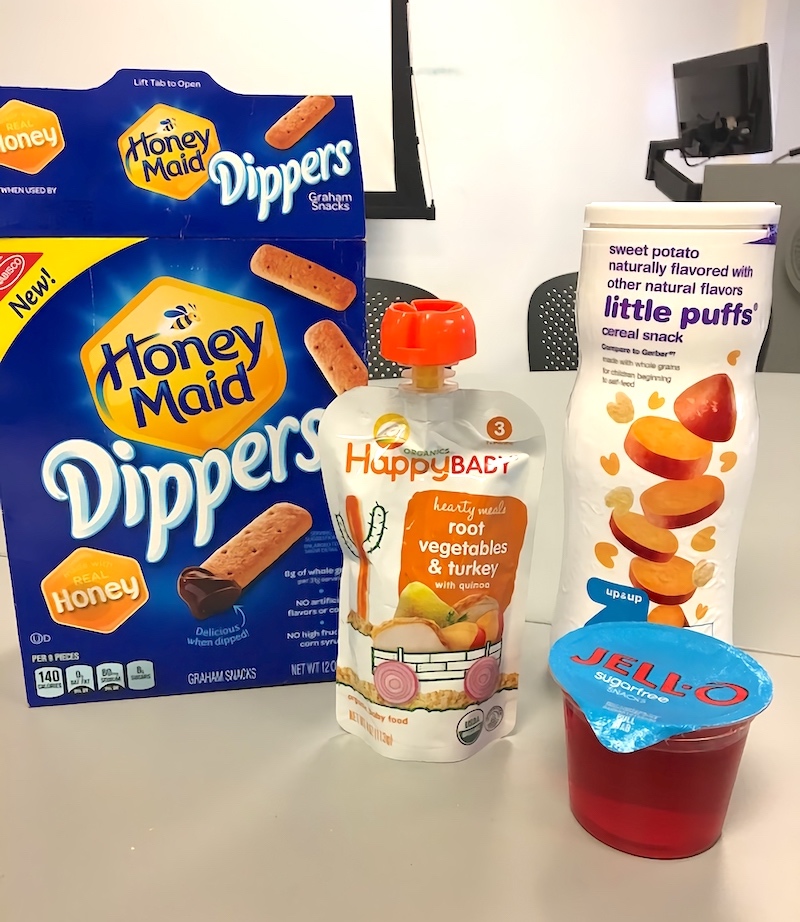
Kid-friendly foods
Trying new foods and going out to eat with friends and family is one of my favorite occupations. Food has always been a very communal experience for me. Growing up, my family would always eat our meals together around the table, and family get-togethers would always revolve around food. Nowadays, meal times are opportunities to reflect on the day with my fiancé or to reunite and connect with old friends. I love going out to eat at new restaurants to try food from different cultures. As a typically-developing human being who has never had issues with feeding or meal times, I take for granted that it is not always this easy for everyone.
This is where OTs come in — we can help children who have difficulties with feeding so that they can participate during family mealtimes. Whether it’s working on oral motor skills or getting children to eat a greater variety of foods, we have a pivotal role in helping families make mealtime a little more enjoyable.
⋯

Play All Day ⟩
November 1, 2016, by Jessica
Hey everyone!
I apologize for being offline for a while — things have been so busy this semester with midterms and events! I wanted to update you all about another one of the awesome resources we have here at USC — our pediatric therapy gym! We are so lucky to have the equipment and resources to be able to practice what we’re learning in an interactive, hands-on way.
A few weeks ago we had our Sensory Integration lecture and lab, where we got to learn about the theory behind Sensory Integration therapy and interventions we could use during treatment. For those of you who don’t know what Sensory Integration therapy is, it is both a theory and intervention based on USC alum’s Jean Ayres’ work. It focuses on how a child’s body integrates sensory information (vestibular, proprioceptive, and tactile) in order to navigate their environment effectively. Through Sensory Integration therapy, the goal is to facilitate an adaptive response, which is a successful goal-oriented action on the environment. For some children with sensory issues, their bodies and brains may not be integrating the sensory information from their environment effectively or efficiently, which can affect a child’s ability to participate in their occupations, such as play.
This is what I love about OT — what looks like “play” is so much more complex and layered than what it seems. And as OTs, we can use play as a means and ends in our treatment sessions with children, since play is one of their main occupations!
Here are some photos from our Sensory Integration lab, where we actually got to jump on all of the equipment and try it out for ourselves! Doesn’t it look like hard work?
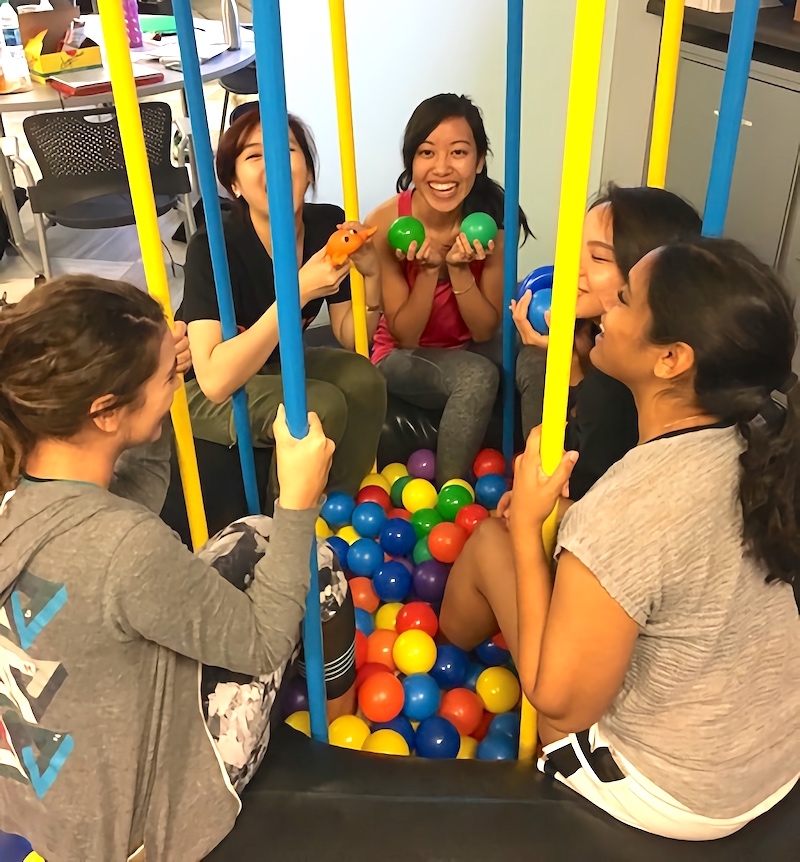
Having a ball!

Just rolling through life
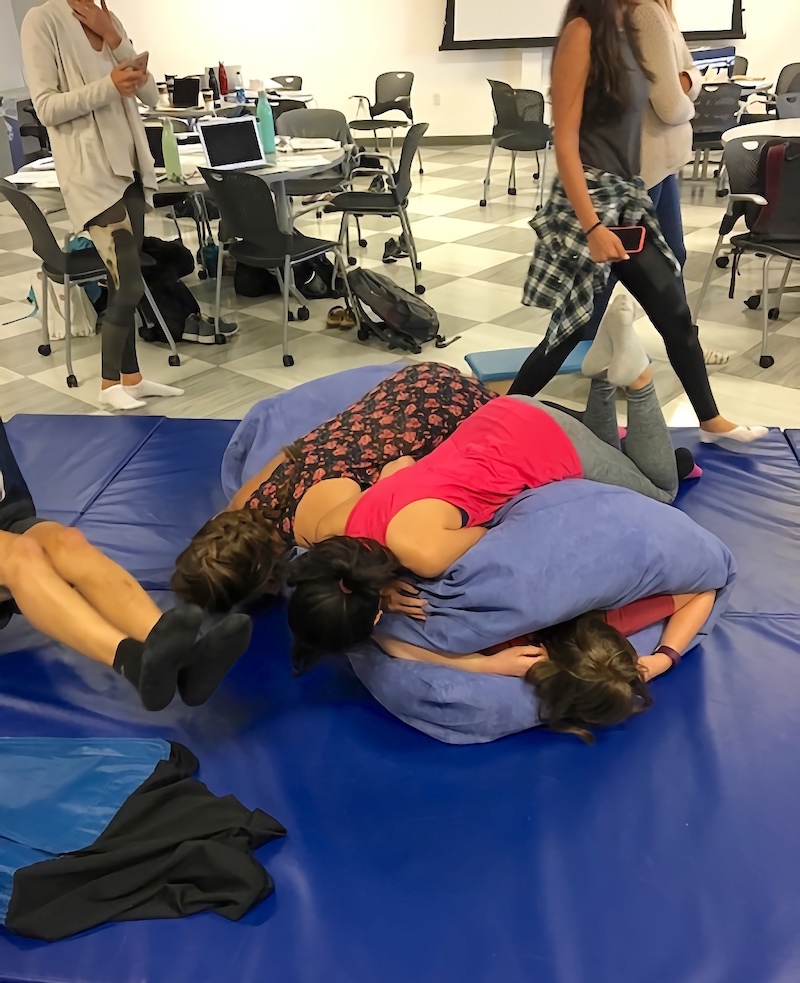
Feeling the (deep) pressure of OT school
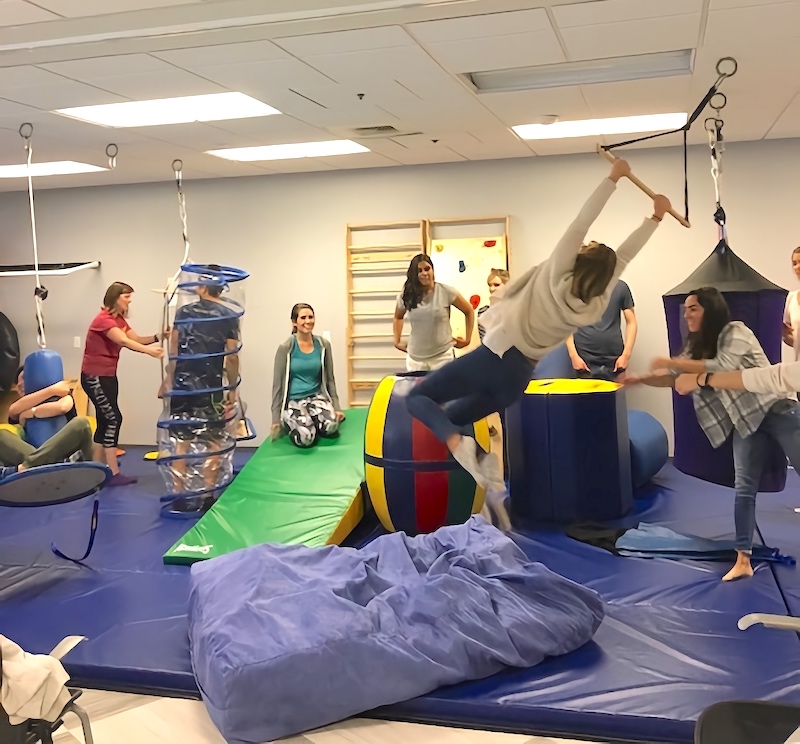
Hanging out
⋯





